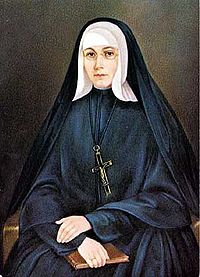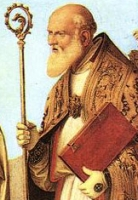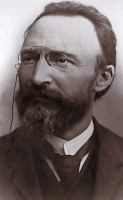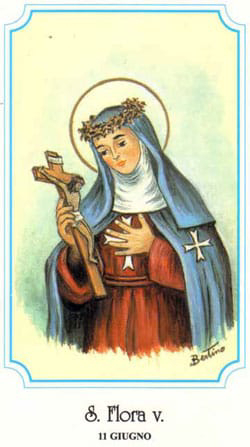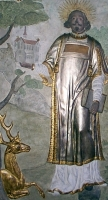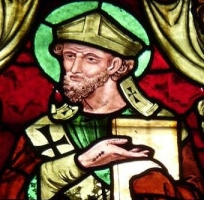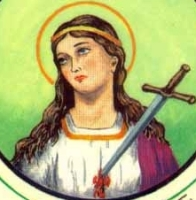Bl. Marie Rose Durocher
அருளாளர் மேரி ரோஸ் டியுரோச்சர்
“இயேசு மற்றும் மரியாவின் புனித பெயர்களின் சகோதரியர்” எனும் அமைப்பின் நிறுவனர்:
(Foundress of the Sisters of the Holy Names of Jesus and Mary)
பிறப்பு: அக்டோபர் 6, 1811
தூய அந்தோனி-சுர்-ரிச்செளியு, லோயர் கனடா, பிரிட்டிஷ் பேரரசு
(Saint-Antoine-sur-Richelieu, Lower Canada, British Empire)
இறப்பு: அக்டோபர் 6, 1849 (வயது 38)
லாங்குவெய்ல், கனடா மாகாணம், பிரிட்டிஷ் பேரரசு
(Longueuil, Province of Canada, British Empire)
ஏற்கும் சமயம்:
ரோமன் கத்தோலிக்க திருச்சபை (கனடா மற்றும் அமெரிக்கா)
(Roman Catholic Church - Canada and the United States)
முக்திபேறு பட்டம்: மே 23, 1982
திருத்தந்தை இரண்டாம் ஜான் பால்
(Pope John Paul II)
முக்கிய திருத்தலங்கள்:
மேரி-ரோஸ் சிற்றாலயம், தூய பதுவை அந்தோனியார் இணைப் பேராலயம், லாங்குவெய்ல், கியூபெக், கனடா
(Chapelle Marie-Rose, Co-cathedral of St. Anthony of Padua in Longueuil, Quebec, Canada)
நினைவுத் திருநாள்: அக்டோபர் 6
அருளாளர் மேரி ரோஸ் டியுரோச்சர், ஒரு கனடிய ரோமன் கத்தோலிக்க அருட்சகோதரியும், “இயேசு மற்றும் மரியாவின் புனித பெயர்களின் சகோதரியர்” (Sisters of the Holy Names of Jesus and Mary) எனும் கல்வி கற்பிக்கும் அமைப்பின் நிறுவனருமாவார்.
தொடக்க கால வாழ்க்கை:
“யூலலி மெலனி டியுரோச்சர்” (Eulalie Mélanie Durocher) எனும் இயற்பெயர் கொண்ட இவர், கிழக்கு கனடா நாட்டின் காடுகள் நிறைந்த பிரதேசமான “கியூபெக்” (Quebec) பகுதியில், “தூய அந்தோனி-சுர்-ரிச்செளியு” (Saint-Antoine-sur-Richelieu) எனும் கிராமத்தில் பிறந்தார். வசதியுள்ள விவசாய குடும்பத்தைச் சேர்ந்த ‘ஒலிவர்” (Olivier) இவரது தந்தை ஆவார். இவரது தாயாரின் பெயர், “ஜெனீவீ டியுரோச்சர்” (Geneviève Durocher)ப் ஆகும். இவரது பெற்றோருக்குப் பிறந்த பதினோரு குழந்தைகளில் இவர் பத்தாவது குழந்தை ஆவார். மூன்று சகோதரர்கள் குழந்தைப் பருவத்திலேயே மரித்துப் போக, அவரது சகோதரர்களான “ஃபிலேவியன்”, “தியோபில்”, மற்றும் “யூசெப்” (Flavien, Théophile, and Eusèbe) ஆகிய மூவர் ரோமன் கத்தோலிக்க திருச்சபையின் குருக்களானார்கள். ஒரு சகோதரி “செரஃபின்” (Séraphine) கனடாவின் “மாண்ட்ரீல்” (Montreal) எனுமிடத்திலுள்ள “நோட்ரே டேம் சபையில்” (Congregation of Notre Dame) இணைந்து துறவறம் பூண்டார்.
டியுரோச்சர், தமது பத்து வயதுவரை, தமது தந்தை வழி பாட்டனார் “ஒலிவர் டியுரோச்சரிடம்” (Olivier Durocher) கல்வி பயின்றார். 1821ம் ஆண்டு இவரது பாட்டனார் மரித்துப் போனதும், “செயின்ட்-டெனிஸ்-சுர்-ரிச்செலியு” (Saint-Denis-sur-Richelieu) எனுமிடத்திலுள்ள “நோட்ரே டேம் சபையினர்” நடத்தும் பள்ளியில் 1823ம் ஆண்டுவரை கல்வி கற்றார். தமது பன்னிரண்டு வயதில் அங்கேயே “புதுநன்மை” (First Communion) அருட்சாதனம் பெற்றார். பின்னர், வீட்டிலிருந்தே கல்வியைத் தொடர்ந்தார். இக்காலகட்டத்தில், “சீசர்” (Caesar) எனும் பெயர் கொண்ட குதிரையை சொந்தமாக வாங்கிய இவர், தகுதிவாய்ந்த குதிரையேற்றம் (Equestrian) செய்பவரானார்.
தமது பதினாறு வயதில், “மாண்ட்ரீல்” (Montreal) எனுமிடத்திலுள்ள “நோட்ரே டேம் சபையின்” உண்டுறை பள்ளியில் சேர்ந்த டியுரோச்சர், அதே சபையில் ஏற்கனவே அருட்சகோதரியாயுள்ள தமது தமக்கை “செரஃபினை” போலவே தாமும் அச்சபையிலேயே துறவற புகுநிலையில் (Novitiate) இணைய விரும்பினார். ஆனால், அவரது உடல்நிலை மிகவும் நலிவடைந்துள்ளதாக நிரூபிக்கப்பட்டதால், துறவற பயிற்சியை பூர்த்தி செய்ய இயலாத டியுரோச்சர், இரண்டு வருடங்களின் பின்னர் வீடு திரும்பினார்.
கி.பி. 1830ம் ஆண்டு, டியுரோச்சரின் தாயார் “ஜெனீவீ” மரித்துப் போனதால், வீட்டைக் கவனித்துக்கொள்ளும் பொறுப்பு இவரிடம் வந்தது. பின்னர் 1831ம் ஆண்டு, தமது சகோதரர் “தியோஃபில்” உதவி பங்குத் தந்தையாக பணியாற்றும் பங்கின் குருக்கள் மற்றும் அலுவலர்கள் தங்கும் இல்லத்துக்கு தமது தந்தையுடன் வந்து தங்கிய இவர், அவ்வில்லத்தின் பணிப்பெண்ணாகவும், தமது சகோதரரின் செலயலராகவும் கி.பி. 1843ம் ஆண்டுவரை பணியாற்றினார். இந்த காலகட்டத்தில், சுற்றுப்புற கிராமப்புறங்களில் பள்ளிகள் மற்றும் ஆசிரியர்களின் கடுமையான பற்றாக்குறை பற்றி அவர் அறிந்திருந்தார். வசதியுள்ள, மற்றும் ஏழைச் சிறுவர்களின் கல்விக்காக அர்ப்பணிப்புள்ள ஒரு மத சமூகத்தின் அவசியம் பற்றி தமது குடும்பத்தினர் மற்றும் பரிச்சயமுள்ளவர்களுடன் விவாதித்தார்.
நிறுவனர்:
கி.பி. 1841ம் ஆண்டு, “லாங்குவெய்ல்” (Longueuil) பங்குத்தந்தை “லூயிஸ்” (Louis-Moïse Brassard), ஃபிரான்ஸ் நாட்டின் “மார்செய்ல்ஸ்” (Marseilles) மறைமாவட்ட ஆயர், “சார்ள்ஸ்” (Charles-Joseph-Eugène de Mazenod) என்பவருடன் கனடாவின் “கியூபெக்” (Quebec) மாகாணத்தில் நிறுவப்படவேண்டிய புதிய சபை பற்றிய பேச்சுவார்த்தையில் இறங்கினார். முன்மொழியப்பட்ட பணியைப் பற்றி அறிந்துகொண்ட டியுரோச்சர், கனடாவுக்கு வரவிருக்கும் புதிய சபையின் துறவற புகுநிளைக்காக தமது சிநேகிதியான “மெலடி” (Mélodie Dufresne) என்பவருடன் சேர்ந்து தந்தை லூயிஸ் மூலமாக அதற்கு விண்ணப்பித்தார். ஆனால், இப்புதிய சபைக்கான பணிகள் மேற்கொண்டு நடக்கவில்லை.
கி.பி. 1841ம் ஆண்டு, டிசம்பர் மாதம், 2ம் தேதி, “ஒப்லேட் தந்தையர்” (Oblate Fathers) எனப்படும், “மாசற்ற மரியாளின் ஒப்லேட் மறைப்பணியாளர் சபையின்” (Missionary Oblates of Mary Immaculate) குழுவொன்று “மோன்ட்ரீல்” (Montreal) வந்து சேர்ந்தது. 1842ம் ஆண்டு ஆகஸ்ட் மாதம், “லாங்குவெய்ல்” (Longueuil) நகரில் ஒரு ஆலயத்தைக் கட்டி திறந்தனர். இந்த தந்தையர் குழுவிலுள்ள அருட்தந்தை “டெல்மன்” (Father Pierre-Adrien Telmon) என்பவர் டியுரோச்சரின் ஆன்மீக வழிகாட்டியானார். கி.பி. 1843ம் ஆண்டு, அக்டோபர் மாதம், தமது சகோதரர் “யூசூபின்” (Eusèbe) சத்திய பிரமாண வைபவங்களைக் காண்பதற்காக “லாங்குவெய்ல்” (Longueuil) பயணித்த டியுரோச்சர், அங்கே ஆயர் “போர்கேட்” (Bishop Bourget) என்பவரைச் சந்தித்தார். அங்கே, இவரது ஆன்மீக வழிகாட்டியான தந்தை “டெல்மன்” மற்றும் ஆயர் “போர்கேட்” இருவரும் புதிதாய் ஆரம்பிக்கப்படவுள்ள, இளைஞர்களின் கல்விக்கு அர்ப்பணிக்கப்பட்ட ஆன்மீக சபையின் தலைமைப் பொறுப்பினை ஏற்குமாறு டியுரோச்சரை வேண்டினர். இதனை ஏற்றுக்கொண்ட இவர், தமது சிநேகிதியான “மெலடி” (Mélodie Dufresne) மற்றும் உள்ளூரின் ஆசிரியையாக பணியாற்றி வந்த “ஹென்றியட்” (Henriette Céré) ஆகியோருடன் இணைந்து தமது பணிகளை தொடங்கினர்.
கி.பி. 1844ம் ஆண்டு, ஃபெப்ரவரி மாதம், 28ம் தேதி, ஆயர் “போர்கேட்” (Bishop Bourget) நடத்திய ஒரு சிறு விழாவில், இம்மூவரும் தமது துறவற புகுநிலையைத் (Novitiate) தொடங்கினர். துறவற சீருடைகளைப் பெற்றுக்கொண்ட இவர்கள், தமது ஆன்மீக பெயர்களையும் தேர்ந்து கொண்டனர். டியுரோச்சர், “சகோதரி மேரி-ரோஸ்” (Sister Marie-Rose) என்றும், “மெலடி” (Mélodie Dufresne), “சகோதரி மேரி-அக்னேஸ்” (Sister Marie-Agnes) என்றும், “ஹென்றியட்” (Henriette Céré), “சகோதரி மேரி-மகதலின்” (Sister Marie-Madeleine) என்றும் பெயர்களை ஏற்றுக்கொண்டனர். புதிதாய் தொடங்கப்பட்ட சபைக்கு மறைமாவட்ட அங்கீகாரமளித்த ஆயர் போர்கேட், புதிய சபைக்கு “இயேசு மற்றும் மரியாவின் புனித பெயர்களின் சகோதரியர்” (Sisters of the Holy Names of Jesus and Mary) எனும் பெயரிட்டார். கி.பி. 1844ம் ஆண்டு, டிசம்பர் மாதம், 8ம் நாளன்று, மூவரும் தமது சத்திய பிரமாணங்களை ஏற்றுக்கொண்டனர். போர்கேட், சகோதரி மேரி ரோசை புதிய சபையின் தலைமை அன்னை என்றும், பயிற்சித்துறவியரின் தலைவர் என்றும் அங்கீகரித்தார். அருட்சகோதரியர் மூவரும் “சகோதரி மேரி-மகதலினுடைய” பள்ளி இல்லத்தில் கற்பிக்கும் பணியைத் தொடங்கினர். ஆனால் இவர்களது பணிக்கான வேண்டுதல்கள் அசாதாரணமானதாக இருந்தது. அவர்களுக்கிருந்த இடம் போதாமையால் பெரிய இடத்துக்கு மாறினார்கள். மாணவர்களின் எண்ணிக்கை எதிர்வரும் வருடங்களில் கூடிக்கொண்டே போனதால், அடுத்தட ஐந்து வருடங்களுக்குள் இன்னும் நான்கு பள்ளிகளை திறந்தார்கள். முப்பது புதிய ஆசிரியைகளை சேர்த்தார்கள். தொடக்கத்தில் சிறுமிகளுக்கு மட்டுமே கல்வி என்று ஆரம்பித்த இவர்களது பணி, பின்னர் வேறு வழியின்றி, சிறுவர்களுக்குமாக என்றானது.
கி.பி. 1845ம் ஆண்டு, மார்ச் மாதம், 17ம் தேதி, கனடிய பாராளுமன்றம் தமது நடவடிக்கை மூலம் இச்சகோதரியரை இணைத்தது. 1846ம் ஆண்டு, கத்தோலிக்க திருச்சபையிலிருந்து விலகி, எதிர்த்திருச்சபைக்கு சென்ற அருட்தந்தை “சார்ள்ஸ்” (Charles Chiniquy) என்பவருடன் சகோதரி மேரி ரோஸுக்கு மோதல் ஏற்பட்டது. இவர், அருட்சகோதரியரின் பள்ளிக்கூடங்களை தமது கட்டுப்பாட்டில் கொண்டுவர எண்ணினார். இவரது இந்த எண்ணம் சகோதரி மேரி ரோசால் உடைக்கப்பட்டதால், இவர் அருட்சகோதரியரைப் பற்றி வெளிப்படையாக பொதுவில் இழிவுபடுத்தி விமர்சிக்க தொடங்கினார்.
மரணமும் முக்திபேறும்:
தமது வாழ்நாள் முழுதும் மோசமான உடல்நிலையால் பாதிக்கப்பட்டிருந்த அருட்சகோதரி மேரி ரோஸ், கி.பி. 1849ம் ஆண்டு, அக்டோபர் மாதம், 6ம் நாள், ஒரு வீணான நோயின் காரணமாக மரித்தார். அவரது வயது, முப்பத்தெட்டு ஆகும்
Feastday: October 6
Birth: 1811
Death: 1849
Beatified: May 23, 1982, Rome, Italy by Pope John Paul II
Eulalie Durocher was born on October 6, 1811, at St. Antoine in Quebec, Canada. She was the youngest of ten children. After her education at the hands of the Sisters of Notre Dame, she helped her brother, a parish priest, and in the process established the first Canadian parish Sodality for young women.
In 1843, she was invited by Bishop Bourget to found a new congregation of women dedicated to Christian education. Accordingly she founded the Sisters of the Holy Names of Jesus and Mary and took the religious name of Marie Rose. Under her saintly and wise leadership, her community flourished in spite of all kinds of obstacles, including great poverty and unavoidable misunderstandings. She remained unswerving in her concern for the poor. Worn out by her many labors, Marie Rose was called to her heavenly reward on October 6, 1849, at the age of thirty-eight. She was declared Blessed by Pope John Paul II on May 23, 1982. Her feast day is October 6.
For the Brazilian doctor, see Marie Durocher.
Marie-Rose Durocher (6 October 1811 – 6 October 1849) was a Canadian Roman Catholic religious sister, who founded the Sisters of the Holy Names of Jesus and Mary. She was beatified by the Roman Catholic Church in 1982.
Bl. Diego Luis de San Vitores
Feastday: October 6
Birth: 1627
Death: 1672
Beatified: October 6, 1985, Vatican by Pope John Paul II
Blessed Diego Luis de San Vitores (1627-1672) was a Spanish Jesuit missionary who founded the first Catholic church on the island of Guam. He is responsible for establishing the Spanish presence in the Mariana Islands.
"San Vitores" redirects here. For other uses, see San Vitores (disambiguation).
Diego Luis de San Vitores, SJ (November 12, 1627 – April 2, 1672) was a Spanish Jesuit missionary who founded the first Catholic church on the island of Guam. He is responsible for establishing the Christian presence in the Mariana Islands. He is a controversial figure today due to his role in starting the Spanish-Chamorro Wars.
Saint Faith
புனித ஃபிதஸ் (அ) ஃபெயித்
(மூன்றாம் நூற்றாண்டு)
அக்டோபர் 06
இவர் பிரான்ஸ் நாட்டைச் சார்ந்தவர்.
கிறிஸ்துவின்மீது மிகுந்த நம்பிக்கை கொண்டதற்காக இவர், உரோமை மன்னன் தியோகிளயனால் உரோமைக் கடவுளை வழிபடுமாறு பணிக்கப்பட்டார்.
இதற்கு இவர் மறுப்புத் தெரிவித்ததால், உரோமை மன்னனால் பலவாறாகச் சித்திரவதை செய்து கொல்லப்பட்டார்.
இவர் கொல்லப்பட்ட ஆண்டு 303 ஆம் ஆண்டாக இருக்கலாம் என்று நம்பப்படுகிறது.
இவர் திருப்பயணிகள், சிறைக் கைதிகள், படைவீரர்கள் ஆகியோருக்குப் பாதுகாவலராக இருக்கிறார்.
Also known as
Fides, Foi, Foy
Profile
Reported to have been an exquisitely beautiful woman, utterly indifferent to the world who had dedicated herself to God. Arrested for her faith and tried by Dacian, procurator at Agen, France in the persecutions of Diocletian. Martyred with Saint Alberta. When some of the spectators expressed sympathy for the girl, Dacian had them beheaded.
Born
at Agen, Aquitaine, (modern France)
Died
• cooked on a brazier, then beheaded
• relics translated to a church in Agen in the 5th century
• relics moved to the abbey of Conques in Rouergue in 886
• relics moved to a new church there in 1050
• part of the relics moved to the monastery of Cucufat, Catalonia, Spain in 1365
Patronage
• pilgrims
• prisoners
• soldiers
Representation
• gridiron
• rods
• sword
Saint Bruno
புனித புரூனோ
நினைவுத் திருநாள் : அக்டோபர் 6
பிறப்பு : 1030, கொலோன் Köln, ஜெர்மனி
இறப்பு : 6 அக்டோபர், செர்ரா சான் புரூனோ Serra San Bruno
புனிதர்பட்டம்: 17 பிப்ரவரி 1623, திருத்தந்தை 15 ஆம் கிரகோரி
பாதுகாவல்: கலாப்ரியா நகர்(Calabria)
இவர் தனது கல்வியை பிரான்சிலுள்ள ரைம்ஸ் (Rheims) நகரில் முடித்தார். 1056 ஆம் ஆண்டு ரைம்சில் இறையியல் பேராசிரியராக பணியாற்றினார். அப்போது அக்கல்லூரியின் தலைமைப் பேராசிரியராகப் பொறுப்பையும் ஏற்றார். பின்னர் 1075 ஆம் ஆண்டில் ரைம்சில் ஆலய நிர்வாகியாக (Chancellor) நியமிக்கப்பட்டார். அதன்பிறகு 1088 ல் திருத்தந்தை 2 ஆம் ஊர்பான் (Urban II) அவர்களுக்கு ஆலோசகராக நியமிக்கப்பட்டார்.
இவர் மிக தைரியத்துடன் விசுவாசத்தை அறிவித்தார். திருச்சபையில் சிறந்த எழுத்தாளராக திகழ்ந்தார். பல புத்தகங்களை எழுதினார். இவரின் இளமைப் பருவ வாழ்வைப் பற்றி அதிகம் அறியப்படவில்லை. இவர் புனித பவுலைப் பற்றியும், திருப்பாடல்களைப் பற்றியும் Commentary on St. Paul and Psalms) எழுதிய புத்தகம் புகழ்பெற்றது.
திருச்சபையில் திருத்தந்தைக்கு எதிராக நடக்கும் அநீதிகளை அகற்ற, திருத்தந்தை 7 ஆம் கிரகோரிக்கு பெரிதளவில் உதவினார். இறைவனின் மேல் கொண்ட பற்றால், கர்த்தூசியன் (Carthusian) சபையை தொடங்கினார். இச்சபை தொடங்கிய காலத்தில், திருச்சபையால் ஏற்றுக்கொள்ளப்படவில்லை. 1514 ஆம் ஆண்டிலிருந்து திருத்தந்தை 10 ஆம் லியோ மீண்டும் அச்சபையை ஊக்கமூட்டி வளர்த்தெடுத்தார்.
Profile
Educated in Paris and Rheims, France. Ordained c.1055. Taught theology; one of his students later became Pope Blessed Urban II. Presided over the cathedral school at Rheims from 1057 to 1075. Criticized the worldliness he saw in his fellow clergy. He opposed Manasses, Archbishop of Rheims, because of his laxity and mismanagement. Chancellor of the archdiocese of Rheims. Following a vision he received of a secluded hermitage where he could spend his life becoming closer to God, he retired to a mountain near Chartreuse in Dauphiny in 1084 and with the help of Saint Hugh of Grenoble, he founded what became the first house of the Carthusian Order; he and his brothers supported themselves as manuscript copyists. Assistant to Pope Urban II in 1090, and supported his efforts at reform. Retiring from public life, he and his companions built a hermitage at Torre, where, 1095, the monastery of Saint Stephen was built. Bruno combined in the religious life the eremetical and the cenobitic; his learning is apparent from his scriptural commentaries.
Born
1030 at Cologne, Germany
Died
• 1101 at Torre, Calabria, Italy of natural causes
• buried in the church of Saint Stephen at Torre
Canonized
1623
Patronage
• possessed people
• Ruthenia
Representation
• branch
• chalice
• chalice with the Sacred Host
• cross in hand
• crucifix with leaves and flowers
• death's head
• globe under his feet
• man holding a book and being illuminated by a ray of light
• skull
• star
• star on his breast
Saint Mary Frances of the Five Wounds of Jesus
Also known as
Anna Maria Gallo
Profile
Saint John Joseph of the Cross and Saint Francis de Geronimo both predicted Mary France's sanctity even before she was born. Daughter of Francesco Gallo, a greedy and angry man, and Barbara Basinsin, a pious and patient woman who put up with her husband's abuse of herself, and his ill-treatment of Mary Frances, who was often worked nearly to death. The girl made her first Communion at age 7, and went to Mass nearly every day of her life there after. When she was 16, her father tried to force her into marriage with a rich young man; she refused, and became a Franciscan tertiary on 8 September 1731. Stigmatist whose outward signs disappeared when she prayed. Suffered assorted bodily ills and severe penances given by her family, her sisters, even her confessors. She eventually became known as a counsellor to priests, sisters, and pious laymen. She spent her last 38 years as a recluse in the home of Father Giovanni Pessiri.
Born
25 March 1715 at Naples, Italy
Died
• 6 October 1791 at Naples, Italy of natural causes
• buried in the church of the Alcantarines, Saint Lucia del Monte, Naples, Italy near the tomb of Saint John Joseph of the Cross
Canonized
29 June 1867 by Pope Blessed Pius IX
Blessed Plàcid Fàbrega Julià
Also known as
Brother Bernat
Profile
Son of Pablo and Maria Julià. Like his older brother before him, Plàcid joined the Marist Brothers of the Schools as a teenager at San Andrea Palo de Mar in Barcelona, Spain, taking the name Brother Bernat and making his vows on 8 September 1905. Taught at schools in Barcelona, Valencia and Igualada; in all schools he was known for his zeal, personal piety, and ministry to the poor, which he tried to make a larger part of his work. Spiritual director at several Marist houses. Organized an oratory for children, served as catechst, and founded a chapter of Catholic Action. As his work with children increased, he began First Commuion classes, and worked with boys to encourage vocations to the priesthood and religious life. Martyred in the Spanish Civil War.
Born
18 February 1889 in Camallera, Girona, Spain
Died
6 October 1934 in Barruelo, Palencia, Spain
Beatified
28 October 2007 by Pope Benedict XVI
Blessed Adalbero of Lambach
Also known as
• Adalbero of Würzburg
• Adalberone di Lambach
• Adalberon
Profile
Son of Count Arnold II of Lambach, Austria and Countess Reginlint. Studied in the cathedral school at Würzburg, Germany, and in Paris, France. Member of the court of King Henry III. Helped found the Benedictine abbey of Lambach c.1040. Bishop of Würzburg, Germany in 1045. Worked for reform of the clergy and religious orders in his diocese, and helped broker the Peace of Speyer in 1075. Driven from his see in 1085 for supporting Pope Saint Gregory VII against Emperor Henry IV in the investiture controversy. Unable to govern his bishopric while in exile, he retired to the life of a monk at Lambach.
Born
c.1010 in Lambach an der Traun, Austria
Died
• 6 October 1090 at the abbey at Lambach, Austria of natural causes
• buried in the abbey church
Beatified
1883 by Pope Leo XIII (cultus confirmed)
Representation
holding a church
Blessed Isidore of Saint Joseph
Also known as
• Brother of the Will of God
• Isidore de Loor
• Isidoor de Loor
• Isidoor of Saint Joseph
• Isidoro De Loor di San Giuseppe
Profile
Oldest of three children born to a pious farm family, and loved working the fields. Passionist lay brother, entering the congregation in 1906, and making his vows on 13 September 1908, taking the name Isidore of Saint Joseph. Known for an intense prayer life, and for his personal simplicity and charity. Lost his right eye to cancer in 1911, and suffered through cancer during his few remaining years.
Born
18 April 1881 at Vrasene, diocese of Gent-Gand, Flanders, Belgium
Died
6 October 1916 of cancer and pleurisy at Kortrijk, West Flanders, Belgium
Beatified
30 September 1984 by Pope John Paul II
Blessed Artaldo of Belley
Also known as
Artaldus, Artaud, Arthaud, Arthold, Artholdus, Artoldo
Profile
Served briefly in the court of Amadeus III of Savoy. In 1120 he joined the Carthusians at the Charterhouse of Portes, France. Priest. He and six brother Carthusians were sent to found the house in Valromey, Switzerland. Founded the monastery of Arvières, dedicated to the Virgin Mary, in 1132. Bishop of Belley, France where he served for more than 70 years. At age 103 he retired to spend his last two years as a prayerful monk at Arvières.
Born
c.1101 in Sothonod castle, Ain, France
Died
6 October 1206 at Arvières monastery of natural causes
Beatified
1834 by Pope Gregory XVI (cultus confirmation)
Saint Iwi
Also known as
Ivi, Iwigius, Ywi, Ywy
Profile
Monk in Lindisfarne, England. Deacon. Spiritual student of Saint Cuthbert at Lindisfarne. Following the Irish ideal of an "exile for Christ", he took ship without bothering to ask its destination, planning to evangelize where it landed. It turned out to be Brittany, where he lived as a hermit and followed a ministry of miraculous healing.
About 250 years later a group of Breton monks carrying the relics of Ivi arrived at Wilton abbey in southwest England. When they were ready to leave they found they could not move the relics; they had found a home at the abbey altar, and the monks were forced to leave them behind.
Born
7th century Northumbria, England
Died
• 6 October, c.704, exact year unknown, of natural causes
• relics at Wilton Abbey
Saint Francis Trung Von Tran
Also known as
• Francis Trung
• Phanxicô Tran Van Trung
Additional Memorial
24 November as one of the Martyrs of Vietnam
Profile
Convert. Layman. Soldier in the Vietnamese army, holding the rank of corporal. Arrested for his faith and ordered to renounce Christianity; he refused. One of the Martyrs of Vietnam.
Born
c.1825 at Phan-xa, Vietnam
Died
beheaded on 6 October 1858 at An-hoa, Vietnam
Canonized
19 June 1988 by Pope John Paul II
Blessed François Hunot
Profile
Priest in the Archdiocese of Sens, France. Imprisoned on a ship in the harbor of Rochefort, France and left to die during the anti–Catholic persecutions of the French Revolution. One of the Martyrs of the Hulks of Rochefort.
Born
12 February 1753 in Brienon-l'Archevêque, Yonne, France
Died
6 October 1794 aboard the prison ship Washington, in Rochefort, Charente-Maritime, France
Beatified
1 October 1995 by Pope John Paul II
Saint Pardulf
Also known as
Pardoux, Pardulphus
Profile
Hermit. Monk at Gueret, France. Abbot at Gueret. During the Saracen invasion of the area, the monks of his house evacuated - except for Pardulf; he stayed behind to pray for the preservation of the monastery; it was saved from attack.
Born
c.658 in Sardent, France
Died
• c.738
• his arm was enshrined at the church of Sardent, France
• the arm and reliquary now at the Museum of Fine Art at Guére, France
Blessed Josep Lluis Raga Nadal
Also known as
Brother Eufrosí Maria
Profile
Member of the Carmelites of the Ancient Observance. Martyred in the Spanish Civil War.
Born
28 December 1913 in Ulldecona, Tarragona, Spain
Died
6 October 1936 in Barcelona, Spain
Beatified
28 October 2007 by Pope Benedict XVI
Saint Alberta of Agen
Additional Memorial
11 October (in Agen, France since 1727)
Profile
Sister of Saint Faith. Martyred in the persecutions of Diocletian.
Died
• beheaded c.303 in Agen, France
• relics re-discovered in a tomb in Venerque, diocese of Toulouse, France in 1884
Saint Magnus of Orderzo
Also known as
Magno
Profile
Bishop of Orderzo, Treviso, Italy. Transferred his see to Heraclea (modern Citta Nuova) in 638 due to Lombard invasion.
Born
at Venice, Italy
Died
c.660 of natural causes
Saint Sagar of Laodicea
Also known as
Sagara, Sagaris, Sagaro
Profile
Legend says that he was a spiritual student of Saint Paul the Apostle, but the dates are wrong for that. Bishop of Laodicea, Phrygia (in modern Turkey). Martyred in the persecutions of Marcus Aurelius.
Died
175
Blessed Juan de Prunera
Profile
Mercedarian friar. Ransomed Christians who were enslaved by Muslims.
Died
1448 at the convent of Santa Colomba in Queralt, Catalonia, Spain of natural causes
Saint Renato of Sorrento
Profile
Hermit. Early bishop of Sorrento, Italy. His hermitage became the first cathedral of Sorrento.
Saint Epiphania
Profile
Born a Princess, the daughter of King Ratchis of the Lombards. Nun at the convent of Santa Maria della Caccia in Pavia, Italy.
Died
c.800 of natural causes
Saint Aurea of Boves
Profile
Nun in Boves, Italy. Abbess of a large convent in Rouen, France.
Born
Amiens, France
Died
8th century
Saint Ceollach
Profile
Bishop of the Mercians. Monk at Iona, Scotland. Spent his final years in Ireland.
Born
Ireland
Died
7th century in Ireland
Saint Erotis
Also known as
Eroteis
Profile
Martyr.
Died
burned at the stake in the 4th century in Greece
Saint Romanus of Auxerre
Profile
Bishop of Auxerre, France.
Died
c.564
Saint John Xenos
Profile
Introduced the monastic life to the island for Crete.
Martyrs of Capua
Profile
A group of martyrs who were either killed in Capua, Italy, or that's where their relics were first enshrined. We now know nothing but their names - Aemilius, Castus, Marcellus and Saturninus.
Martyrs of Kyoto
Profile
Fifty-two Japanese lay people, some single, some married, some parents, some children, who were martyred together during one of the government sponsored persecutions of Christians.
• Blessed Agatha of Kyoto • Blessed Anna Kajiya • Blessed Antonius Domi • Blessed Benedictus of Kyoto • Blessed Catharina Hashimoto • Blessed Cosmas of Kyoto • Blessed Didacus Tsuzu • Blessed Emmanuel Kosaburo • Blessed Franciscus Hashimoto • Blessed Franciscus of Kyoto • Blessed Franciscus Shizaburo • Blessed Gabriel of Kyoto • Blessed Hieronimus Soroku • Blessed Ioachim Ogawa • Blessed Ioannes Hashimoto Tahyoe • Blessed Ioannes Kyusaku • Blessed Ioannes Sakurai • Blessed Leo Kyusuke • Blessed Linus Rihyoe • Blessed Lucia of Kyoto • Blessed Lucia Soroku • Blessed Lucia Toemon • Blessed Ludovica Hashimoto • Blessed Ludovicus Matagoro • Blessed Magdalena Kyusaku • Blessed Magdalena of Kyoto • Blessed Mancius Kyujiro • Blessed Maria Chujo • Blessed Maria Koshima Shinshiro • Blessed Maria of Kyoto • Blessed Maria of Kyoto • Blessed Maria of Kyoto • Blessed Maria of Kyoto • Blessed Martha Kyusuke • Blessed Martha of Kyoto • Blessed Martha of Kyoto • Blessed Mencia of Kyoto • Blessed Monica of Kyoto • Blessed Monica of Kyoto • Blessed Monica of Kyoto • Blessed Petrus Hashimoto • Blessed Regina Kyusaku • Blessed Rufina of Kyoto • Blessed Sixtus of Kyoto • Blessed Thecla Hashimoto • Blessed Thomas Hashimoto • Blessed Thomas Ikegami • Blessed Thomas Kajiya Yoemon • Blessed Thomas Kian • Blessed Thomas Koshima Shinshiro • Blessed Thomas Toemon • Blessed Ursula Sakurai •
Died
6 October 1619 in Kyoto (Miyako), Japan
Beatified
24 November 2008 by Pope Benedict XVI
Also celebrated but no entry yet
• Alessandro da Ceva

